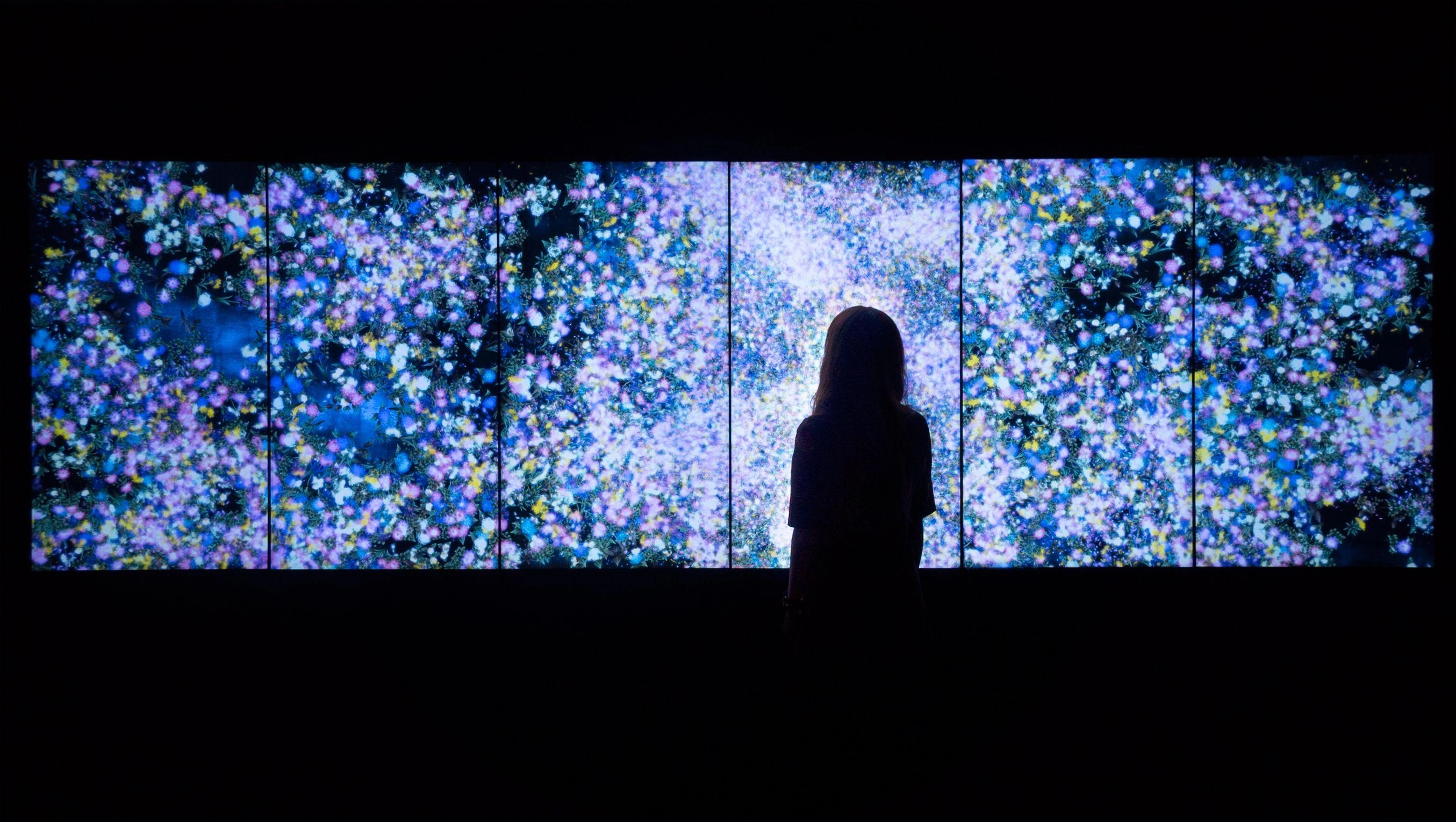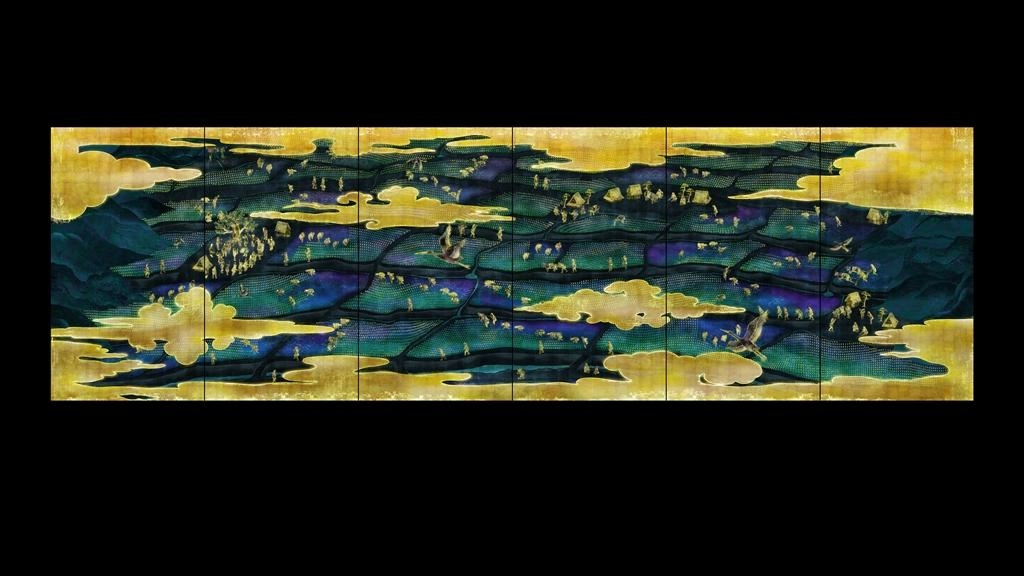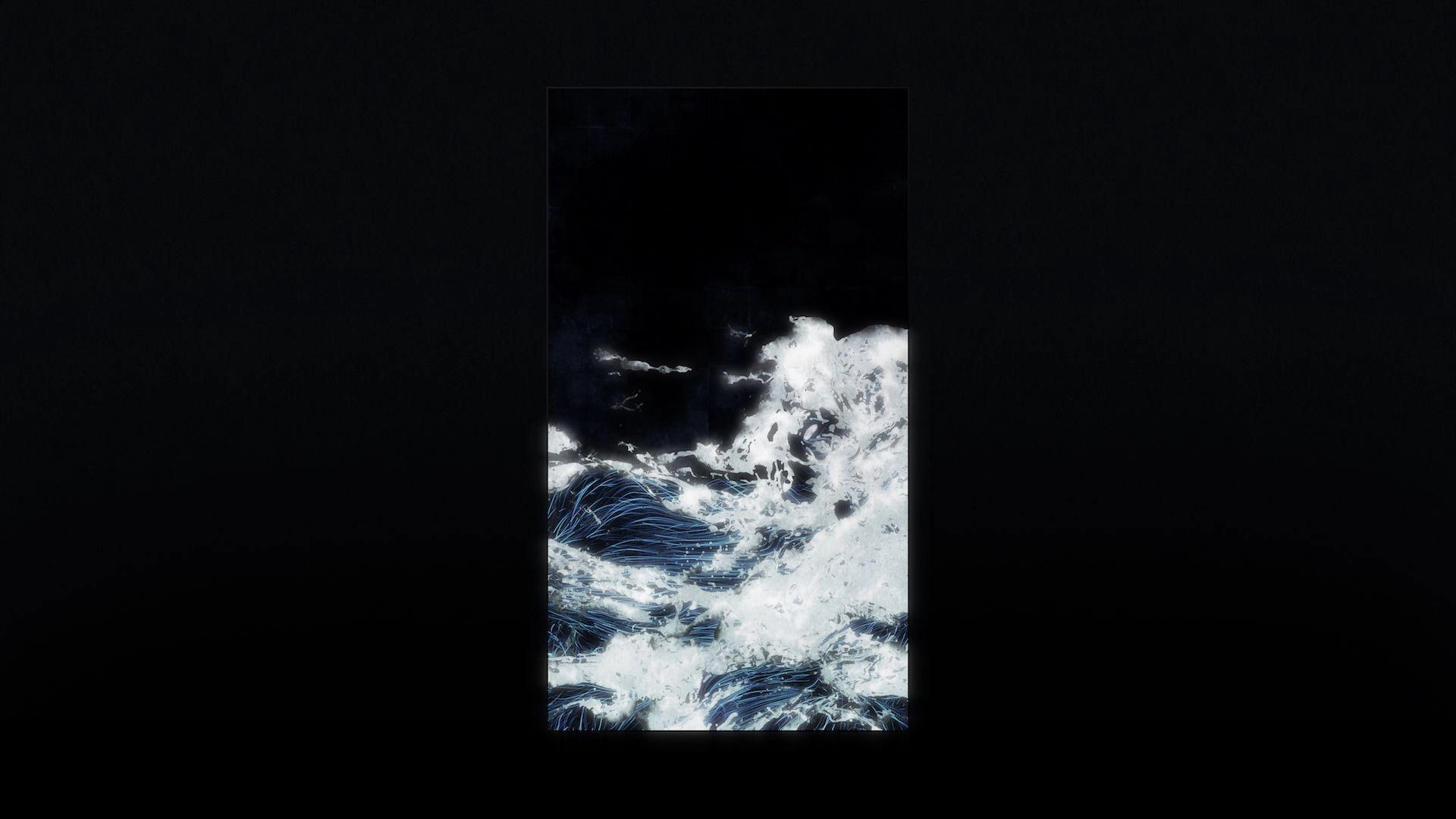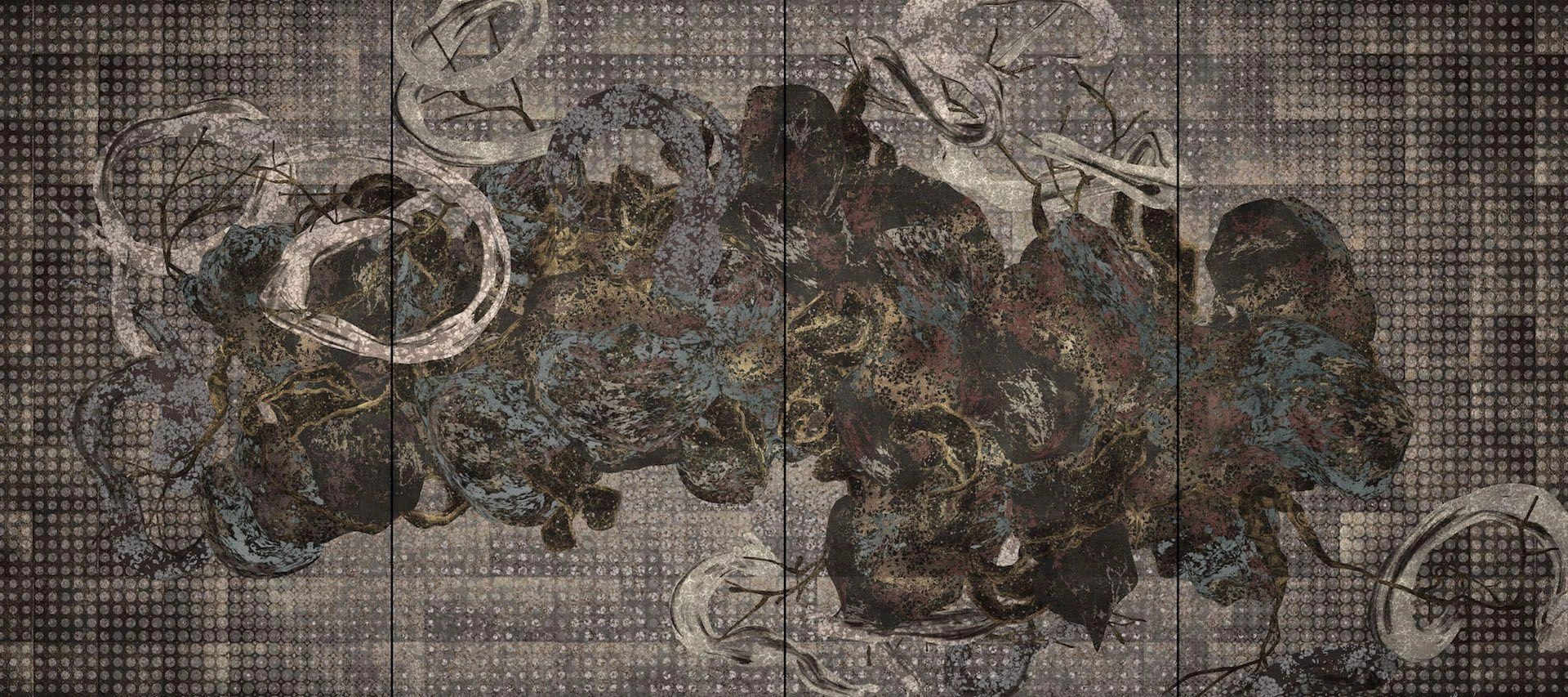Black Waves
All oceans are connected to each other, and so are all the waves in this world.
In classical East Asian art, waves are often expressed using a combination of lines. These waves created by lines allow us to realize that each wave is one part of a larger flow, and conveys life as though the waves are a living entity.
When the waves rise, we can feel a powerful breath of life, as though life is blooming. It feels as though each wave has a life of its own. But when the waves collapse and disappear, we realize, with a sense of fragility, that they were a part of the ocean. And that ocean is connected to all of the other oceans. In other words, all of the waves in the world are connected to each other.
The waves seem alive because life is like a rising wave. It is a miraculous phenomenon that continuously emerges from a single, continuous ocean.
The waves are expressed through a continuous body of countless water particles. The interactions of particles are calculated, and then the movement of water is simulated in three-dimensional space. Lines are created along the trajectories of the water particles, and drawn on the surface layer of the three-dimensional waves.
The lines are created with what teamLab refers to as Ultrasubjective Space. In contrast to space that is created through, or cut out by, lenses and perspective, Ultrasubjective Space does not fix the viewer’s viewpoint and in turn frees the body. The wall that the waves are seen on does not become a boundary between the viewer and the artwork, and the artwork space is continuous with the space of the viewer’s body.









